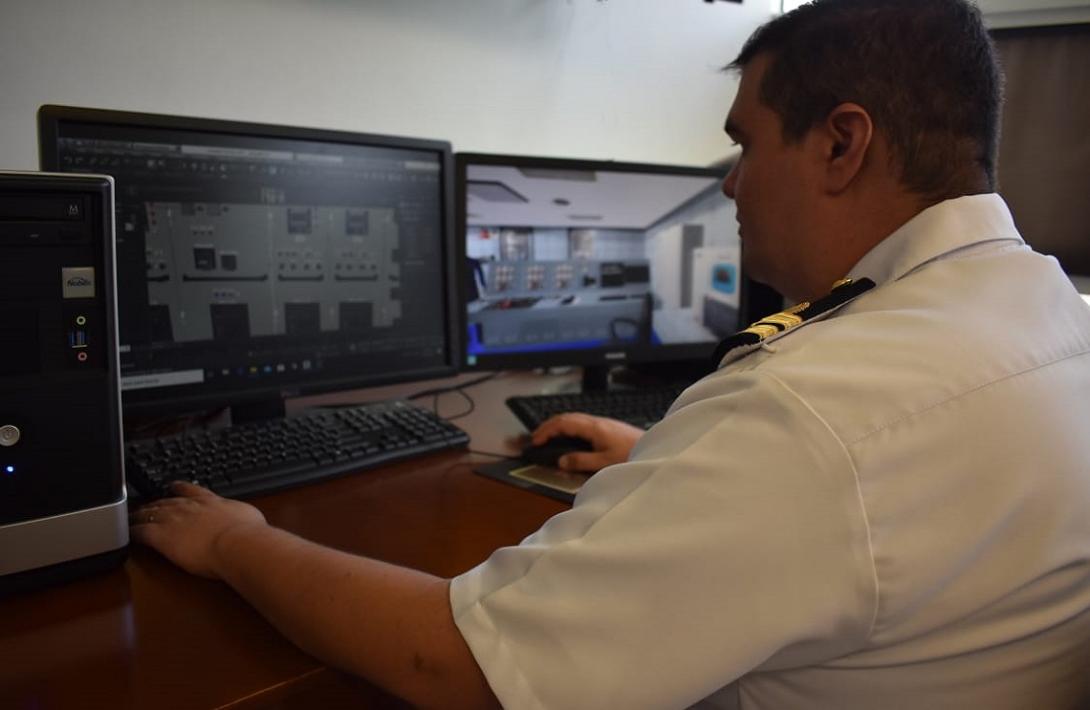The Universidad de los Andes together with the Naval Academy of Cadets Almirante Padilla of the Colombian Navy are carrying out a research project for a prototype of the engineering console of an exclusive economic zone patrol boat (OPV in English), which will initially facilitate the training of the crews of the Naval Institution. This research is funded through resources administered by the Francisco José de Caldas fund, of the National Ministry of Science and Technology.
The idea arose after seeing that the instruction and training in this area of great importance for ships, is carried out mostly in a theoretical way, without the manipulation of the ship's console in emergency or crisis environments for practical exercises.
Lieutenant Aldo Francisco Lovo Ayala, researcher of the project, says that the greatest benefit is the strengthening of training and decision-making for the crew. In other words “this innovation seeks to generate an immersive environment with virtual reality glasses, where the crew may conduct an experiential practice as if they were on board this type of ship. This development helps the training of the crews, the simulate navigation in the normal situation in a OPV ship, and in case of an emergency, the user can through the virtual reality goggles, see all the sensors, buttons, and gauges to conduct the procedures, interacting with the hands and with the elements of the console as the buttons, switches and levers. All this with the purpose that when they face an emergency they carry out the procedures established for the safety of the ship of the engineering room and so become more effective units face to nay situation.”
The prototype of the simulator is carried out in three phases, the first one is related to the modeling of the virtual environment of the machine room and the engineering console. An exercise executed and tested to validate the autonomy of the trainer and the acceptance of the environment by the user.
For the first stage it was necessary a process of revision of plans, data collection, design and modeling of environment, which was conducted by qualified personnel of the Center for Research, Development and Innovation for Maritime Activities, of the Naval School. First Sergeant Juan Carlos Álvarez Molina, simulator operator and co-researcher of the project, was in charge of carrying out this task with the Universidad de los Andes.
“This process required displacement to an OPV, where the topographic register of the entire physical environment of the engineering room was carried out, such as space, height, depth, finding and size of the console, accessories and additional equipment of the environment, button diameter, parameterization of sensors, knowing how barometers work, tachometers. After having that information we came to the design center, we used modeling software, we made a completely new design, all millimetrically calculated, taking into account that the objective is that future crews carry out their practices in virtual mode so that when they are on board these units, they are familiar with the environment and the procedure in the maneuvers,” explains Sergeant Álvarez.
The second phase, where we are currently working, has to do with the incorporation of virtual reality glasses; and the third phase sees the integration of a model of the engineering console take the user in the middle of the exercise and interact with the different elements.
Source: press-Colombian Navy

